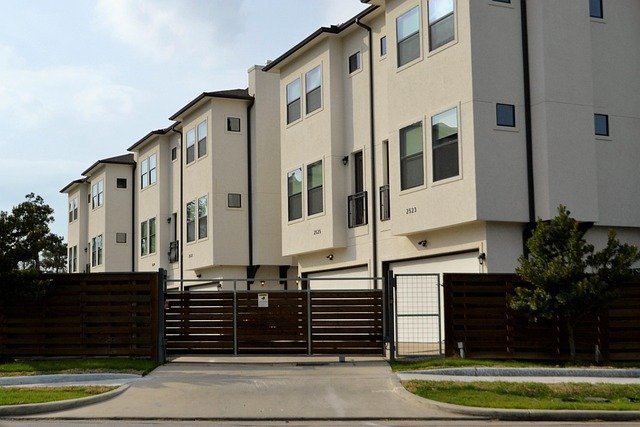How neighborhood infrastructure influences daily living in fast-growing emirates
Neighborhood infrastructure plays a central role in shaping daily life in fast-growing emirates. For residents of apartments, decisions around rental, leasing, and tenancy are influenced by access to amenities, reliable utilities, clear contracts, and convenient commute options. Understanding how these elements interact helps renters and landlords set realistic expectations for furnishing, maintenance, billing, inspections, and pricing.

Neighborhood infrastructure affects how apartment communities function, how tenants budget, and how landlords manage properties. In fast-growing emirates, recent construction, evolving transport links, and new commercial zones change not only property availability but also everyday routines. For renters and those considering leasing, the quality of roads, public transit, local services, and community amenities can determine commute times, access to groceries and healthcare, and suitability for families or professionals. Clear tenancy contracts, routine inspections, and predictable billing practices help both tenants and landlords adapt to rapid change while protecting rights and responsibilities.
How do neighborhoods shape rental and leasing choices?
Neighborhood character guides rental and leasing decisions. Proximity to workplaces, schools, and retail influences the demand for different apartment types and affects average pricing. Areas with established residential infrastructure often support longer tenancy periods and more stable leasing terms, while newly developed districts may offer promotional rents but less mature utilities or fewer community services. For landlords, understanding neighborhood patterns helps set competitive rental rates and informs choices around offering furnished versus unfurnished units, which in turn impacts tenancy durations and turnover-related maintenance needs.
How do property and residential amenities affect daily life?
Amenities such as parks, gyms, retail outlets, and on-site maintenance shape everyday convenience and social life. In residential complexes, shared facilities can lower the need for external travel and contribute to higher perceived value for tenants, which influences leasing demand and pricing. Well-integrated amenities also reduce pressure on local infrastructure by centralizing services. Maintenance of common areas and timely contract agreements for service providers ensure that amenities remain functional—affecting satisfaction for long-term renters and influencing periodic inspections and upkeep budgets.
What should tenants know about tenancy, contracts, and inspections?
Tenancy agreements outline responsibilities for utilities, billing cycles, and maintenance. Common clauses cover who pays for routine maintenance, how inspections are scheduled, and conditions for deposit refunds. Tenants should review clauses related to furniture or furnishing allowances when leasing furnished apartments, and clarify how utilities are billed—individually or pooled through the landlord. Regular inspections can prevent misunderstandings about wear and tear, and documented maintenance requests provide evidence if disputes arise over repairs or contract fulfillment.
How do furnishing, maintenance, utilities, and billing impact budgeting?
Furnishing choices and maintenance responsibilities significantly affect monthly outlays. Furnished units often command higher rents but reduce upfront furnishing costs for tenants. Utilities billing models differ—some apartments include water and district cooling in rent, others bill separately through providers—affecting predictable monthly expenses. Maintenance schedules for elevators, HVAC systems, and shared plumbing influence service continuity; delayed upkeep can lead to higher interim repair costs. Clear billing statements and transparent provider contracts help residents track expenses and anticipate seasonal variations in utility use.
What are pricing and cost considerations for renting in growing emirates?
Real-world cost insights help renters and landlords plan. Below is a concise comparison of common apartment-related costs and typical providers in these emirates, presented as broad estimates to guide budgeting. This section uses market-typical benchmarks and known service providers to illustrate how rental, utilities, and connectivity costs can combine when considering a residential property.
| Product/Service | Provider | Cost Estimation |
|---|---|---|
| Studio apartment rental (central areas) | Market listings via Bayut / Property Finder | AED 2,500–5,000 per month (estimate) |
| 1-bedroom apartment rental (Marina / Business Bay) | Market listings via Bayut / Property Finder | AED 4,000–9,000 per month (estimate) |
| Utilities (DEWA: electricity & water for 1BR) | DEWA | AED 200–600 per month (estimate) |
| Home internet and TV package | Etisalat or du | AED 300–600 per month (estimate) |
Prices, rates, or cost estimates mentioned in this article are based on the latest available information but may change over time. Independent research is advised before making financial decisions.
How does commute infrastructure change neighborhood value and daily routines?
Commute options—metro lines, bus services, roads, and last-mile connections—directly affect daily schedules. Apartments in neighborhoods with reliable public transport typically see stronger long-term rental demand from commuting professionals and reduced reliance on private vehicles, which also alters parking needs and local traffic patterns. When new transport links are introduced, neighborhoods can quickly shift in desirability; this can affect contracts and pricing trends, and prompt landlords to adjust leasing terms or investment in additional onsite services like shuttle connectivity.
Neighborhood infrastructure is a practical lens through which to evaluate apartment living in fast-growing emirates. From leasing and tenancy clauses to maintenance schedules and inspections, every aspect of daily life ties back to how well an area’s services, utilities, and transport systems perform. Making informed decisions—reviewing contracts carefully, checking recent inspections, and comparing typical billing and pricing benchmarks—helps both residents and property managers align expectations with the realities of rapidly changing urban environments.






